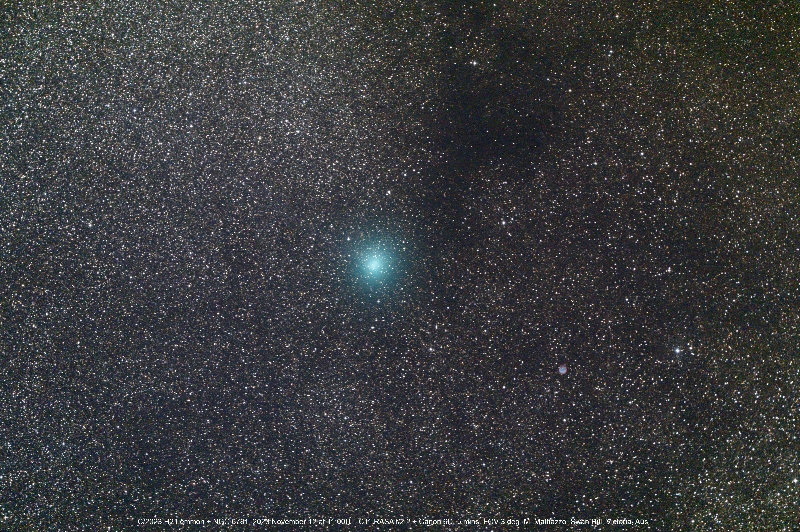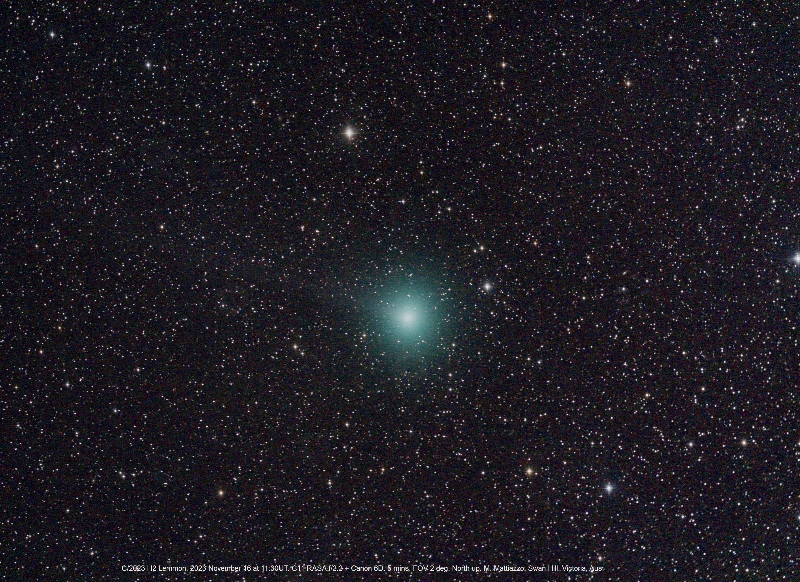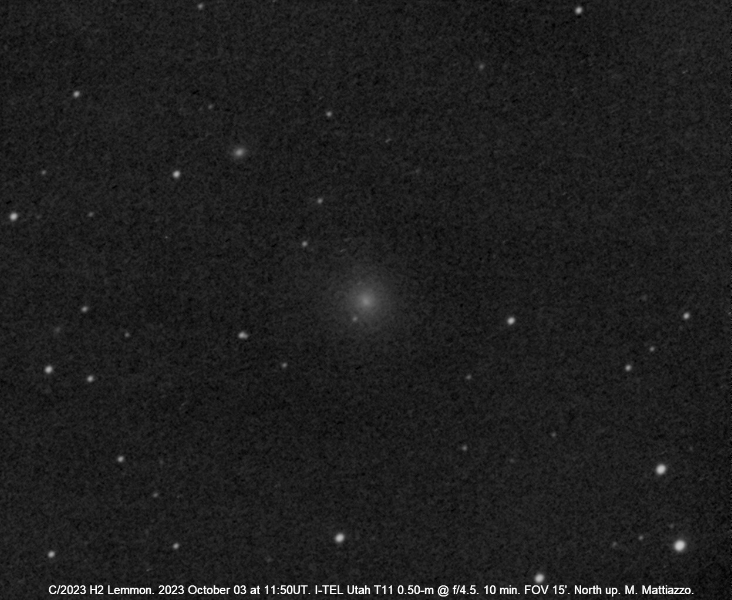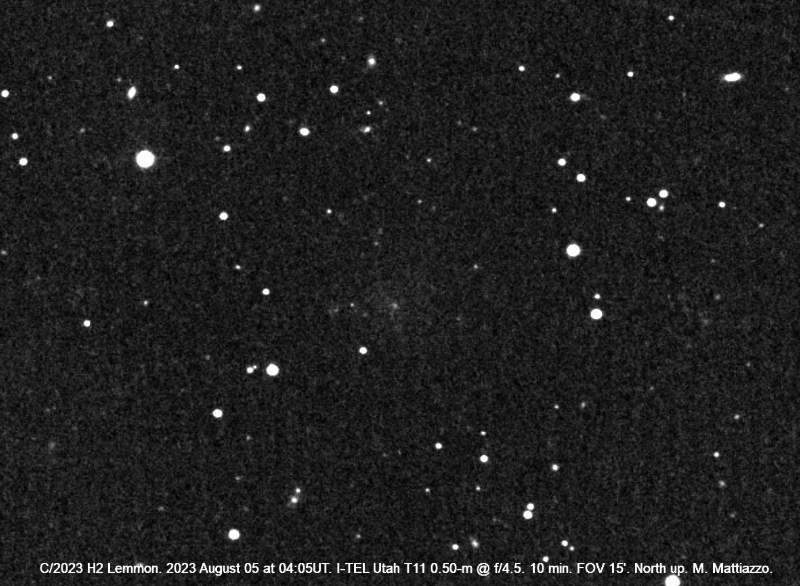C/2023 H2 Lemmon
Closest to Sun on 2023 Oct 29 at 0.89AU
Closest to Earth on 2023 Nov 11 at 0.19AU
Maximum magnitude 6 in November 2023
Orbital period 3,800 years

Comet C/2023 H2 Lemmon in the star clouds of Aquila taken on 2023 November 12 at
11:00UT
using a C11 RASA f/2.2 + Canon 6D. 5 mins. FOV 3 deg. near Swan Hill, Victoria,
Aus.
Visual estimate using 8x40mm binoculars m1=6.5, coma =15' DC4. No tail
Note planetary nebula NGC 6781 at lower right.
This comet
arrived at perihelion on 2023 October 29 at 0.89AU, followed by a very
favourable Earth approach of 0.19AU (29 million kms) on 2023 November 11
When
initially discovered, it had a faint absolute magnitude of H0=14, such that its
perihelion survival was questionable.
However, more precise orbital calculations indicated that it is a periodic comet
that has been around the Sun before, likely more than once.
The other great news is that, typical of periodic comet behaviour, its activity
started to increase rapidly once it hit the ice-line (2AU)
where water ice sublimation activity commences.
A more likely absolute magnitude is H=10-11 which will see the comet reach
binocular range of magnitude 6 at closest approach during November 2023.
Prior to
Earth approach, viewing was restricted to Northern Hemisphere viewers.
During September, the comet brightened from magnitude 14 to 11, when situated in
Ursa Major, low in the evening sky for northerners.
During October, the comet moved into the morning sky, situated in Canes Venatici.
It brightened from magnitude 11 to 9 during the month and was
within 1 degree of magnitude 9.1 galaxy M106 between the mornings of October 13
to 16.
As November
commenced, the comet, now situated in Bootes, was better observed
during evening hours but still confined to Northern Hemisphere observers.
Its rapid motion was evident as it approached Earth, brightening from
magnitude 9 to 6 at closest approach on November 11th.
Fortunately this is when southern hemisphere observers get an
opportunity to see it.
On the evening of November 11, the comet was situated in Hercules, near the
Aquila border, very low on the north-western horizon.


charts for 35South latitude
Conditions rapidly improved over the nights following as the comet travelled
south-eastwards at up to 10 degrees per day.
On the evening of November 15, it located 1.5 degrees East of Alpha Capricornii.

Note the contrasting colours. Green comet. Yellow Alpha 1,2 Capricornii and Blue
Nu Cap.
Despite the bright forecast, it appeared large and diffuse with a coma at
least 15’ across, requiring a dark sky away from light pollution.

C/2023 H2 Lemmon on the evening of November 16 displaying a faint ion tail.
Moonlight interfered with the show from November 18
By the time moonlight is out of the way from November 29th, the comet had faded
to magnitude 10.
On November 30, the comet was 30’ west of Mag 12 galaxy IC 5179 in Grus.
During December, the comet appeared
quite condensed, typical of post perihelion behaviour.
I estimated the comet at magnitude 11.1 on December 16 as per below image.


Comet C/2023 H2 Lemmon on 2023 October 03 at 11:50UT.
Image taken remotely using I-TEL Utah T11 0.50-m @ f/4.5. 10 min. FOV 15'.
North up.
Coma diameter is a maximum of 3'. The magnitude, whilst approximate, is
10.5-11.0.

C/2023 H2 Lemmon on 2023 August 05 at 04:05UT.
Taken remotely using I-TEL Utah T11 0.50-m @ f/4.5. 10 min. FOV 15'. North up.
approximate magnitude = 16 showing a 2' coma.







